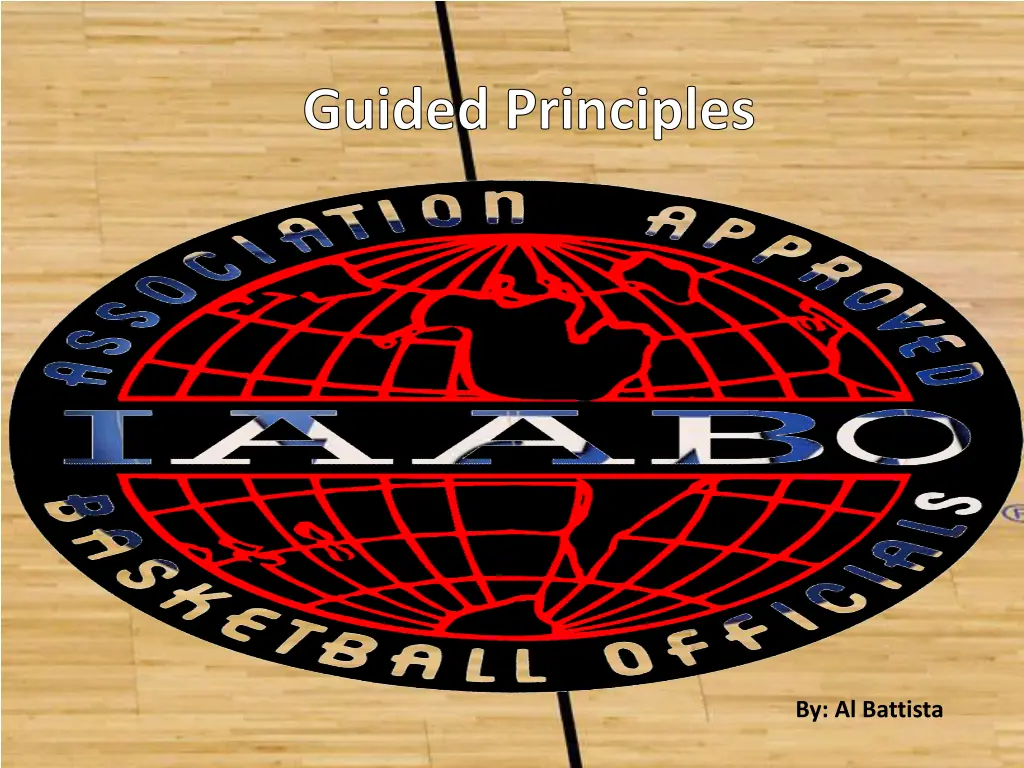
Key Guided Principles for Officiating in Basketball
Explore the essential principles for officiating basketball games effectively, covering areas such as hand checking, unsporting conduct, proper foul handling, terminology usage, rebounding fouls, continuous motion situations, and professional conduct. These guidelines help maintain fairness, accuracy, and professionalism in the game.
Download Presentation

Please find below an Image/Link to download the presentation.
The content on the website is provided AS IS for your information and personal use only. It may not be sold, licensed, or shared on other websites without obtaining consent from the author. If you encounter any issues during the download, it is possible that the publisher has removed the file from their server.
You are allowed to download the files provided on this website for personal or commercial use, subject to the condition that they are used lawfully. All files are the property of their respective owners.
The content on the website is provided AS IS for your information and personal use only. It may not be sold, licensed, or shared on other websites without obtaining consent from the author.
E N D
Presentation Transcript
Guided Principles By: Al Battista
Guided Principles 1. Enforce hand checking on the perimeter. Remember a touch is not a hand check. Hand checking that effects SQBR or forearm checking will not be allowed. 2. Enforce unsporting conduct. Use your behavioral warning when necessary . Cursing and threatening you is a technical foul. 3. Non-Shooting fouls must go to proper throw-in spots. Don t get complacent. 4. Violations must go to proper throw-in spots.
Guided Principles 5. Time outs must go where the ball is at. 6. Double Fouls must go at the point of interruption. 7. Technical fouls must go at the division line away from the table. 8. Use proper terminology.
Guided Principles 9. On rebounding fouls do not call incidental or marginal contact , it has to be illegal. Remember possession consequence and clean-up. 10. Rebounding Coverage: L- Strong Side. T- Perimeter and Weak Side. C- Weak Side. 11. Do not allow players to dictate your angles on a play. Fight to get open angles,
Guided Principles 12. When plays are going to the Lead, let Lead have the first crack at these plays, if you are the T and C and you have to come , remember, it has to be a strike right down the middle , T or C would have a cadence whistle. 13. Officiate on the ball in your primary. Know your area of responsibility and referee accordingly. 14. Look for help on out of bounds plays from your partners of which you are not certain. Don t guess. 15. Know the difference between incidental and illegal contact.
Guided Principles 16. Continuous motion can occur on a try, tap or free throw. 17. Continuous motion can occur on a personal or technical foul. 18. Continuous motion occurs when the shooter is in the act of shooting and he/she is fouled or their teammate is fouled. 19. Let Plays Start/Develop and Finish to the basket.
Guided Principles 20. Show effort and urgency when going from T-L. 21. Any official may call any illegal action that is observed if they have an open look. 22. Do not fraternize with team personnel, on and off the court. 23. Do not have excessive conversation with players, coaches, trainers, spectators or table personnel.
Guided Principles 24. Maintain 2-3 strides to the left/right and rear of the ball when in transition from L-T. 25. Officiate from the outside in when officiating on the ball. 26. When reporting fouls to the table, show energy, project well and have a cadence to the table. 27. Know the status of the ball at all times.
Guided Principles 28. Know your clock(s) at all times. 29. Know your penalties. 30. Know your team foul totals. 31. Know the A.P. Arrow. 32. On one on one situations, officiate 70% defense and 30% offense.
Guided Principles 33. In the lead position, find secondary defenders as quick as possible. 34. Strive for Excellence and not Perfection. 35. Remember Game, Partners, Self.
